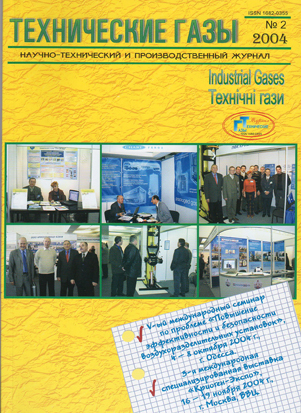DYNAMICS OF N2-O2-H2 MIXTURES FORMATION IN BLIND DUCTS AND SPACES UNDER PREPARATION OF HYDROGEN SYSTEMS AND GAS SUBSTITUTION PROCESSES' SAFETY EVALUATION
DOI:
https://doi.org/10.18198/j.ind.gases.2004.0129Keywords:
air, nitrogen, hydrogen, rinsing, purging, diffusion, substitution, design, concentration, safetyAbstract
Based on design-theoretic developments, investigations of the gaseous fluid safety evaluation problem in various blind lines of hydrogen systems in the process of their preparation were made. The dynamics of triple N2-O2-H2 mixtures formation in blinds within the wide range of preparation time was researched. The design-graphic method for gaseous fluid safety evaluation was developed using the boundary curves which outline on the preparation time coordinates the areas of hazardous concentrations in the blind systems. To implement the proposed method, a special computer program was designed and the boundary curves of safety were determined for the most problematic blind portions of the hydrogen filling system. The possible ways for solving the revealed safety problems under preparation of hydrogen systems were offered and analyzed. The results of such investigations are intended for designers, product engineers and other specialists involved in development, design and operation of hydrogen systems.
Downloads
Issue
Section
License
LICENSE AGREEMENT
After receiving an article for publication as required revision scientometric databases each author directs the license agreement on the assignment and transfer of the management of copyright. Signatures of the author (s) it is desirable to seal the personnel department of the institution where the author works (authors), or the seal of the Faculty.
Revision refers to the authors one layout for proofreading. Permissible only those fixes that result in compliance with the layout of the original text of the article. Significant changes are not permitted. Layout should be sent to the editorial office within days of receipt.

